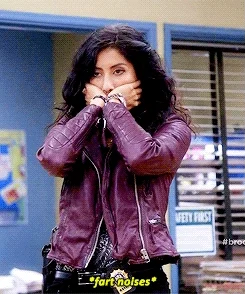Alberts also early on talked openly of building an on-campus hockey arena, a years-old idea that had gotten little traction. But before that could happen, there were bigger financial challenges to be tackled.
The UNO athletic department in recent years had been in constant budget-cutting mode because of revenue shortfalls. Earned revenues from ticket sales and sponsorships had been flat for a decade, forcing campus administrators to inject ever-increasing amounts of student tuition and fee dollars to prop up the budget. A financial scandal related to athletics funding in 2006 had even cost a UNO chancellor her job.
Christensen told Alberts he needed to come up with a long-term plan that would solve the “financial nightmare” in athletics.
UNO at the time competed in Division II in all sports but hockey, and Alberts said he soon learned that was not working.
Beyond hockey, UNO athletics had little profile in the community. Few attended football or basketball games, seemingly uninterested in watching the Mavericks play the likes of Washburn, Missouri Western and the other small Missouri and Kansas schools in their conference.
Alberts began working quietly with a group of prominent Omaha business leaders on exploring a new future for athletics.
“He’s competitive, strategic and focused,” said Josh White, at the time a young administrator working under Alberts. “He likes to be around a team he can trust and go to work on problems.”
Alberts said he and the group let the data drive their decisions, and ultimately came to some surprising realizations.
UNO was one of the nation’s largest Division II schools. Urban metropolitan-class universities like UNO tended to compete in Division I and play mid-major college basketball, gunning for a bid in the NCAA's March Madness basketball tournament.
Another trait of such schools: They typically don’t have football teams.
Alberts and the group additionally soon realized UNO did not have the budget to play football at even the lowest level of Division I.
UNO’s $1.4 million budget for football would need to double just to reach the average for the schools competing in the Football Championship Subdivision. And that didn’t include the cost of new facilities, or new spending on women’s sports to preserve gender balance.
The school couldn’t realistically expect to make up that kind of money selling football tickets. In the 2010 season, UNO had recorded just over $100,000 in football ticket revenue.
As much as he loved football, Alberts said he concluded UNO simply couldn’t afford to take the sport to Division I.
Alberts subsequently found a conference potentially interested in sponsoring UNO’s D-I membership: the Summit League. It was a basketball-centric conference made up largely of Dakota schools that had at one time been league rivals of UNO in D-II, as well as fellow metropolitan schools in cities like Kansas City, Tulsa and Denver.
But the Summit League didn’t offer wrestling. In fact, UNO had only three of the eight men’s sports the Summit League sponsored. No other school in the league had fewer than six.
In what was perhaps the most controversial move, Alberts decided that if the Summit League offer came through, UNO would drop wrestling and reallocate its nearly $500,000 budget to fund new men’s soccer and golf teams. Chancellor Christensen also signed off on the decision, even though he was a huge wrestling fan and close friend of Coach Denney.
“John and I both knew emotionally this would be extraordinarily difficult for us,” Alberts said last week, “and neither of us liked it at all.”
UNO’s admission to the Summit was quietly approved by league schools in March 2011. The timing could hardly have been worse. The vote came just as UNO’s wrestling team was opening competition in the D-II national championships in Kearney.

